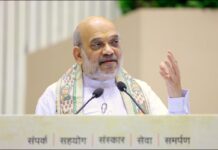 Continued from last week
Continued from last week
Unfortunately, post Kazarian decisions seem to be affirming the two-part test and final merits determination analysis notwithstanding the holding in a prior decision, Buletini v. INS, 860 F.Supp. 1222 (E.D. Mich 1994), which held, “[o]nce it is established that the alien’s evidence is sufficient to meet three of the criteria listed in 8 C.F.R. § 204.5(h)(3), the alien must be deemed to have extraordinary ability unless the INS sets forth specific and substantiated reasons for its finding that the alien does not meet extraordinary ability.” Id. at 1234.
Under the burden shifting approach in Buletini, the petitioner should be deemed qualified, and the burden then shifts onto the Service to reject the evidence that meet the criteria, if suppose, it finds that the evidence was fraudulent or too dated and stale. In fact, such a burden shifting approach is not unknown in other aspects of immigration law.
As my colleague David Isaacson has pointed out, in the asylum context, an applicant who demonstrates that he or she has suffered past persecution on account of a protected ground is rebuttably presumed to have a reasonable fear of future persecution on that same ground. 8 C.F.R. §§ 208.13(b) (1), 1208.13(b) (1).
In such cases, by regulation, “the Service shall bear the burden of establishing by a preponderance of the evidence” that a change in circumstances, or the reasonable possibility of relocating within the country of persecution, should lead to a denial of asylum. 8 C.F.R. §§ 208.13(b) (1) (ii), 1208.13(b) (1).
Rijal v. USCIS, 772 F. Supp. 2d 1339 (W.D. Wash. 2011), aff’d Rijal v. USCIS, 683 F.3d 1030 (9th Cir. 2012) is a decision that explicitly follows the Policy Memorandum, and ignores the burden shifting approach as set forth in Buletini.
Although the petitioner in Rijal, a Nepali documentary film maker, submitted a UNICEF prize, the USCIS concluded that it did not meet the evidentiary criterion of “lesser nationally or internationally recognized prizes or awards of excellence” as it was awarded more than 4 years ago and did not provide evidence of the alien’s sustained acclaim.
While the court criticized the USICS for failing to consider this evidence under 8 CFR §204.5(h) (3) (I) and for similar errors under other evidentiary criteria, it nevertheless held that the petitioner did not suffer prejudice from these errors as “it made those errors with an eye toward the ultimate merits determination.”
Rijal at 1347. Based on a holistic determination of the petitioner’s evidence, the court held that the USCIS appropriately found that the petitioner did not demonstrate sustained national or international acclaim. It is clear that the Ninth Circuit in Rijal affirmed the two step test set forth in the Policy Memorandum even though the suggestion of a “final merits determination” was mere dicta in Kazarian.
Noroozi and Assadi v. Napolitano – F. Supp. – (SDNY Nov. 14, 2012), available on AILA InfoNet at Doc. No. 12111644 (posted 11/16/12), is another recent decision from the Southern District of New York that has agreed with the Kazarian two-step analysis. Petitioner Noroozi represented Iran in table tennis at the 2008 Olympics in Beijing. Although neither Noroozi nor the Iranian table tennis team won any medal at the Olympics, the USICS initially approved the EB-1 petition, but then subsequently revoked it. A second EB-1 petition was filed, which was denied on the ground that Noorzi only met two of the criteria, but not three.
The court agreed with the USCIS that there was no evidence to substantiate that he played a “leading or critical role” for his team and nor did the “published material” about him pass muster since it focused more on the team and only briefly mentioned Noroozi. Even though the failure to meet the evidentiary criteria could have ended the analysis, the court also discussed how Noroozi did not merit a favorable judgment under the second part “final merits determination.”
Since Noroozi ranked 284th in the world in table tennis, and finished 65th place in table tennis in the 2008 Olympics, the court noted that this would oblige the USCIS to hypothetically grant EB-1 petitions to the 283 higher ranked table tennis players, and also to the 283 higher ranked players in other sports, assuming they were non-US citizens, as well as to the 64 table tennis players who outperformed Noroozi in the 2008 Olympics.
The court’s “final merits determination” in Noroozi is troubling as the EB-1 was never intended only for the number one player in a sporting field, and this decision should be contrasted with a pre-Kazarian decision involving an ice hockey player in the National Hockey League whose team won the Stanley Cup, but was not an all-stars or one of the highest paid players, but was still found to be qualified under EB-1. See Muni v. INS, 891 F. Supp. 440 (N.D. Ill 1995).
The “final merits determination” permits USCIS to set subjective baselines with respect to rankings of players in sports even if they would potentially qualify under the ten evidentiary criteria as Muni did after he sought reversal of the denial of his EB-1 petition in federal court. Interestingly, in Noroozi, the attorney also became a plaintiff along with the petitioner on the ground that the USCIS denied the EB-1 petition based on the petitioner’s association with the attorney who had been unfairly singled out in a DOS cable. That strategy too failed since the court rejected that there was any bad faith on the part of the USCIS in denying Noroozi’s EB-1 petition.
Various unpublished AAO decisions [See e.g. AILA InfoNet Document Nos. 12062752 and 12062753] suggest that the government’s final merits determination will consider evidence whether or not the petitioner has demonstrated : 1) a “level of expertise indicating that the individual is one of the small percentage who have risen to the very top of the[ir] field of endeavor,” 8 CFR § 204.5(h)(2); and 2) “that the alien has sustained national or international acclaim and that his or her achievements have been recognized in the field of expertise.” § INA 203(b)(1)(A); 8 CFR § 204.5(h)(3). See also Kazarian, 596 F.3d at 1119-20.
While it makes sense to preserve the argument in the record that the final merits determination is inapplicable and to propose the burden shifting approach under Buletini instead, it also behooves a petitioner to argue that his or her client merits a favorable adjudication under the “final merits determination” analysis given that it has been blessed in post-Kazarian decisions.
The amorphous nature of this standard allows the petitioner’s attorney flexibility to make a broad argument just as it gives the USCIS examiner the same flexibility to approve or not approve a case even after the petitioner has submitted evidence under the evidentiary criteria.
For instance, if a petitioner has met 3 out of 10 evidentiary criteria, the agile practitioner may be able to argue that the petitioner has demonstrated to be among the small percentage who has risen to the top of the field, sustained national or international acclaim, and recognition of achievements, by highlighting only the strongest evidence rather than evidence submitted under all three criteria.
If the scholarly articles are very impressive, but the awards are not and the petitioner may have judged the work of only one PhD student, then the focus could be on the impressive scholarly articles when qualifying him or her under the final merits determination.
Moreover, under the final merits determination, a petitioner may be able to point to other evidence that may not categorically fall under the 10 evidentiary criteria, such as testimonials from eminent authorities in the field, as well as petitioner’s stellar academic background.
Of course, if the evidence submitted under the evidentiary criteria is all qualitatively superior and extensive, then the practitioner must not rest on these laurels and take pains to highlight this for the “final merits determination.” Finally, the practitioner must always remind the USICS that the “final merits determination” is governed by the preponderance of evidence standard, as suggested in the Policy Memorandum too, which requires only 51% certainty.
It need not be this way as Congress probably did not intend for the USCIS to create a subjective final merits determination, when it enacted the priority worker categories under the Employment-based first preference in the Immigration Act of 1990. The starting point for examining the legislative history of the Immigration Act of 1990 is the House Report. See H.R. Rep. No. 723, Pt. 1, 101st Cong., 2d Sess. 4 (Sept. 19, 1990). With respect to aliens of extraordinary ability, the House Report states:
In order to qualify for admission in this category an alien must (1) demonstrate sustained national or international acclaim in the sciences, arts, education, business or athletics (as shown through extensive documentation); (2) be coming to the United States to continue work in that area of expertise; and (3) by virtue of such work benefit the United States. Documentation may include publications in respected journals, media accounts of the alien’s contributions to his profession, and statements of recognition of exceptional expertise by qualified organizations. Recognition can be through a one-time achievement such as receipt of the Nobel Prize.
An alien can also qualify on the basis of a career of acclaimed work in the field. In the case of the arts, the distinguished nature of the alien’s career may be shown by critical reviews, prizes or awards received, box office standing or record sales. In short, admission under this category is to be reserved for that small percentage of individuals who have risen to the very top of their field of endeavor.H.R. Rep. No. 723 at 69.
There is nothing in this passage that suggests that the USCIS needed to conduct a two-step analysis to determine extraordinary ability. On the contrary, the House Report broadly suggests a number of possibilities under which an alien can establish extraordinary ability, such as through publications in respected journals, media accounts or statements of recognition of exceptional expertise by qualified organizations. Moreover, the House Report also indicates that “[a}n alien can also qualify on the basis of a career of acclaimed work in the field.”
The implementing regulations appropriately relied on the House Report in defining “extraordinary ability” to mean “a level of expertise indicating that the individual is one of the small percentage who have risen to the very top of the field of endeavor.” See commentary on implementing regulations at 56 Fed. Reg. 60897 (Nov. 29, 1991).
The proposed regulations would have used one of the “few (emphasis added) who has risen to the very top of the field,” but after listening to the objection of commentators, the Service substituted the word “few” with “small percentage” in deference to the same, albeit broader, verbiage that was used in the House Report.
By developing the ten evidentiary criteria at 8 C.F.R. §204.5(h) (3) (1)-(x), and recognizing that if an alien met three out of the 10 criteria, the Service appropriately followed Congressional intent by allowing this alien to demonstrate extraordinary ability, which is “a level of expertise indicating that the individual is one of the small percentage who have risen to the very top of the field of endeavor.”
(This article is partly based on Demystifying the Final Merits Analysis of Extraordinary Ability by Cyrus Mehta, Roberto Caballero and Rita Sostrin, Immigration Practice Pointers, AILA 2013-14 Ed. The article contains general information and should not be relied upon as a substitute for legal advice.)
Cyrus D. Mehta






